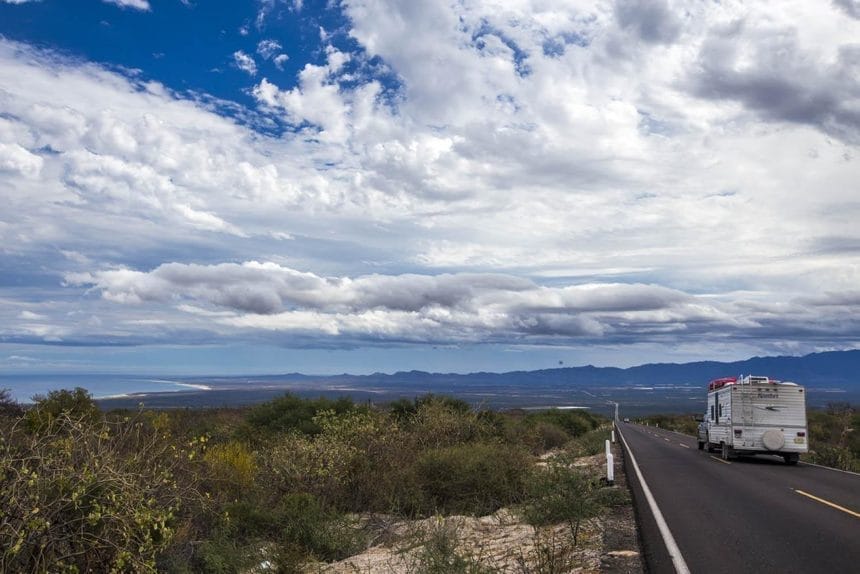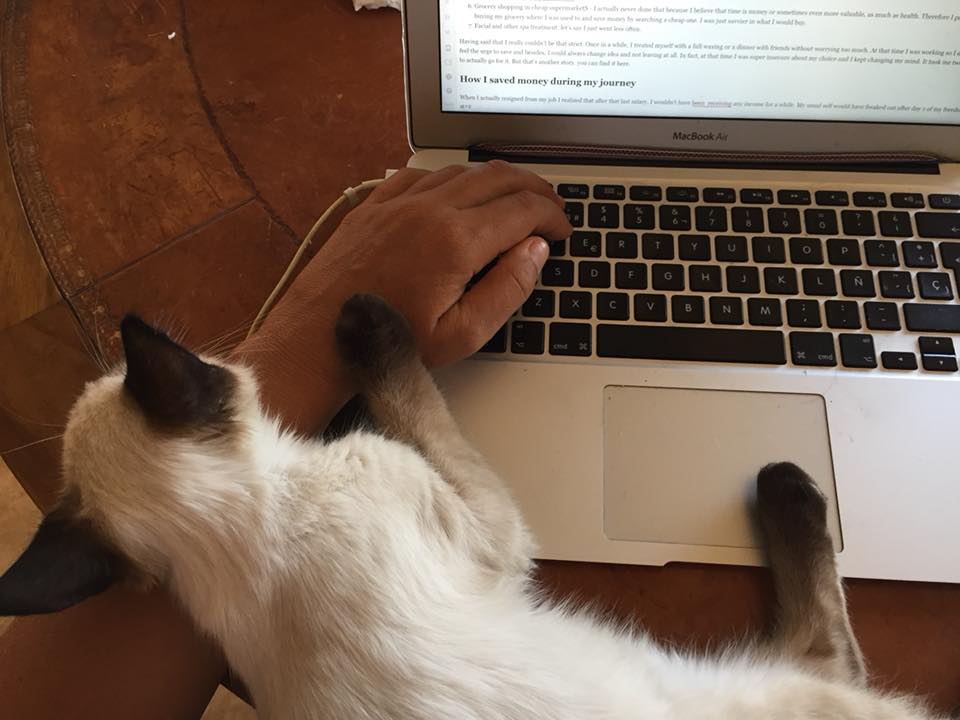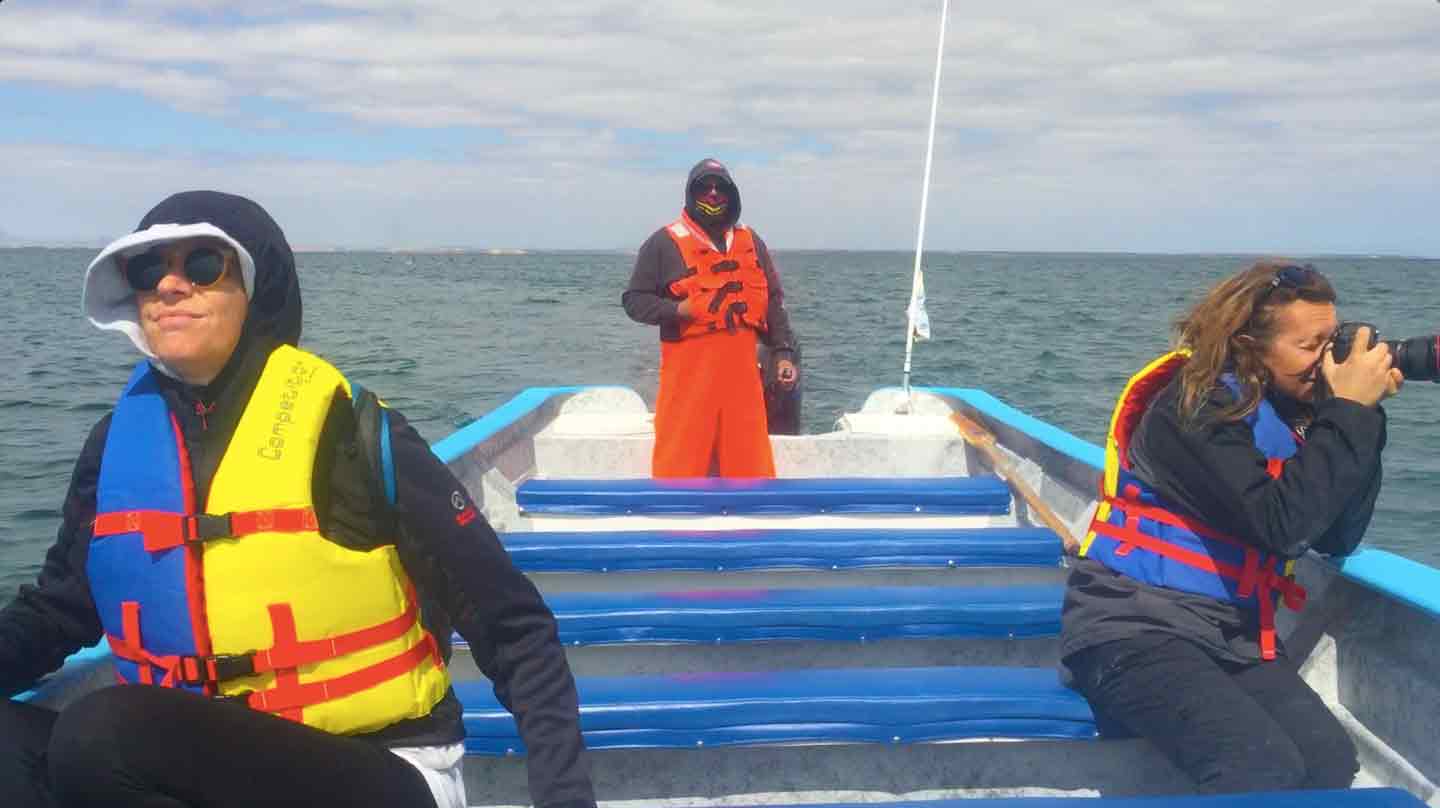How to save money for a long term trip
Disclaimer: This page may contain affiliate links. If you make a purchase using one of those links, I may earn a commission at zero cost for you. Please see my disclaimer policy here and my privacy policy here.
If you’ve been dreaming of dropping everything and hitting the road but have no clue how to actually afford it, you’re in the right place.
I’ll walk you through how I managed to save enough money to travel for two years without a steady income—just a few random freelance gigs here and there—until I eventually figured out a way to make travel sustainable long-term.
Back in March 2017, I quit my job and never looked back. My motto? The more I save, the freer I am to travel.
At first, it was all about cutting expenses. The less I spent, the more I saved. Obvious, right?
(Although—spoiler—I don’t think like that anymore. But that’s a topic for another post.)
The real questions are: how do you actually save, and where do you cut back? That depends on what matters most to you.
Take a friend of mine—he budgets specifically for beer. I don’t care for drinks, so I’d rather spend that money on a great meal. I also learned that I hate hostels, so I prioritize nicer, clean private rooms instead. It’s all about knowing what you’re willing to sacrifice—and what you’re not.
Planning a solo trip? Check out my other dedicated page to solo female travelers and read more on solo travel tips on how to stay safe, travel long term, overcome the fear of traveling alone, how to hike alone like a pro, and many more tips from pro travelers.
How I saved money before I left for my journey around the world

Cutting Costs to Buy My Freedom: What I Gave Up to Travel Full-Time
The very first thing I did when I started seriously thinking about traveling full-time was cut out all the “unnecessary” expenses. Of course, what counts as unnecessary really depends on your lifestyle and priorities—and mine have changed a lot since then. But back then, this was my list:
💇♀️ Hairdresser
I ditched salon visits and started dyeing my own hair. The results? A chaotic mix of browns, greys, and leftover blonde. But I didn’t care. I was chasing freedom, not beauty standards.
🍝 Eating Out
I stopped going out for meals—unless it was with people who understood my plan and didn’t judge when I said I’d just order something cheap. I hated how stingy that made me feel, especially not being able to treat friends. That part was hard. My ego took a hit every time someone bought me a drink or a coffee. But I had to learn to accept it, even if it was uncomfortable. Humbling, for sure.
👗 Fancy Clothing
I was leaving the corporate world, so I didn’t need blazers, heels, or business attire anymore. I bought only practical clothes for hiking and travel—basic and functional. It worked for a while… until I suddenly missed dressing up. That craving came out of nowhere, but that’s a story for another time.
🙅♀️ Waxing
Let’s be real: I used to wax every two weeks religiously. When I started saving, I stretched it to once a month—or whenever I absolutely had to. I hated it, but it saved money, and I survived.
🥬 Superfoods & Organic Everything
When I had a steady income, healthy food was a top priority. I’d splurge on raw vegan ingredients and exotic superfoods. But that stuff adds up fast, so it had to go. Cutting it out meant saving a ton.
🛒 Grocery Shopping
I didn’t switch to super cheap stores, though. I’ve always believed that time is more valuable than money (and sometimes even health), so I kept shopping where it was quick and convenient. I just became more mindful about what I put in my cart.
💆♀️ Spa & Facials
I stopped going as often. Not a huge sacrifice, but still a shift.
🏋️♀️ Gym & Yoga Classes
This one’s tricky. Health is important, but I realized I didn’t need to pay someone to tell me how to move my body. I quit my memberships—yoga, pole dance (yes, it’s a thing and it’s super fun), and cross-fit. I went for runs, did home workouts, and tried to stay somewhat consistent. Having a workout buddy helps, but I mostly managed alone, even if it wasn’t perfect.
That said, I wasn’t overly strict. I still treated myself now and then—waxing appointments, the occasional dinner out—because back then I was still working. I hadn’t quit yet, and deep down, I wasn’t totally sure I would.
😬 The Truth? I Was Scared.
I wavered a lot. It took me two years to finally go for it. I kept changing my mind. I kept imagining backup plans. But eventually, I did it.
Setting My Priorities
When I finally resigned to pursue the digital nomad life, I knew I wouldn’t see a paycheck for a while. Old me would have panicked—but this time, I felt calm. I had a plan. Sort of.
I had saved enough and set up my finances to get me through a couple of years, and I knew I’d figure the rest out along the way. My goals were clear:
- 🕒 Time to travel while working on my projects
- 🧘 Peace of mind to stay focused and grounded
- 🌍 New experiences to expand my perspective
- 💰 Enough money to do all of the above without constant stress
I had all of that, at least for the first year. Now, a full year later, not only have I stayed afloat—I’ve actually saved more than I thought, without being as frugal as I’d planned. If I keep being mindful, I’m pretty sure I can keep traveling for a few more years.
And in this post, I’m going to show you how.
You Don’t Need to Beg for Food to Travel
After months of counting every penny on the road, I had a realization: if traveling means staying in a crappy hostel, eating canned food, and skipping out on everything that makes a place worth exploring, then… what’s the point?
At least for me, it just doesn’t make sense.
I’m not here to judge anyone’s choices—we’re all free to live the way we want. But I travel to feel a place, not just be physically in it. I’d rather take fewer trips and actually enjoy them than travel forever and live like a vagabond with no joy.
I keep coming across posts and videos of people bragging about traveling on $1 a day or living entirely off the kindness of strangers. And look—if that works for them, cool. But I don’t think that’s sustainable, or fair.
To me, relying on people’s generosity to fund your adventures feels a little off, especially when there are families struggling to feed their kids. I can’t justify asking for food when travel is a luxury, not a necessity. That’s why I save money before I go. Simple as that.
Some people have suggested I add a “Buy Me a Coffee” button to my blog. I get it—it’s a nice gesture when someone truly values your work and wants to support it. I did it for a while, but I personally don’t feel right asking strangers to fund my meals just because I’m traveling. Maybe that’s just my ego talking, but it doesn’t sit well with me.
That said, I do believe travel should be accessible without going broke. So I focus on traveling smart—not cheap to the point of misery. I’ve found a balance that works for me, and that’s what I’m here to share.
How do I save money while traveling without becoming obsessed or depriving myself?
We’re lucky to have access to endless resources and information—stuff I wish I had in my 20s or 30s. But hey, I’m doing it now. I’m healthy, I’ve some savings, and I’ve enough experience and drive to make it work.
So let’s skip the fluff. I’m going to share exactly how I save money while traveling—without begging, without burnout, and without missing out on the experiences that make travel meaningful.
House and Pet Sitting

My #1 Travel Hack: Pet Sitting
This has been my absolute favorite resource on the road—and honestly, I never expected it to come with so many benefits.
So, how does it work?
Simple: you take care of someone’s home and pets while they’re away, and in return, you get to stay in their house for free. It’s a win-win—you get accommodation, and the homeowner gets peace of mind knowing their furry friends are in good hands.
But let me be clear: this isn’t just a “free stay” loophole. You need to love animals genuinely. If you’re just “meh” about pets or can’t imagine adjusting your schedule around their needs, this probably isn’t for you.
Most homes have Wi-Fi, making it the perfect setup for those who work remotely. But for me, it’s more than just practical.
I love being around animals. Since I can’t have my own while traveling, this gives me a way to enjoy their company still. Dogs, cats—just being near them is comforting and hilarious. Honestly, sometimes it feels like I should be paying the homeowners for the joy their pets give me.
If you’re an animal lover and flexible with your time, pet sitting can be a game-changer.
I want to write a dedicated post about being a housesitter, but in the meantime, if you want to start off and find some assignments, TrustedHousesitter is the biggest and most reputable site. If you use my link, you get 25% off the subscription rate and I get 2 free months of subscription.
Work Exchange: Travel, Eat, and Sleep Without Spending Much
This option is similar to house sitting, but with one key difference: you’ll work approximately 25 hours a week in exchange for a place to stay (sometimes a shared room or even a tent) and meals.
Several online platforms connect travelers with hosts—basically a marketplace where people running farms, hostels, eco-lodges, or small businesses post opportunities and you can apply.
You choose a region, browse the listings, and if something catches your eye, you send a message through the platform explaining what you can offer and your available dates.
Tip: Be very clear about your expectations, what you’re comfortable doing, and ask detailed questions. Communication is everything.
I used Workaway.info (it costs around $36 a year and it’s totally worth it). I only did one exchange, and although the experience wasn’t perfect, I still gained something from it.
The downside? I didn’t have specific tasks, so I often felt a bit useless—except when I cooked. That part I loved. There were four of us “Workawayers,” and we got along great, which made the whole thing fun.
It’s especially popular with younger travelers, but I think it can be a great experience for anyone. You learn to adapt, meet people from all over, and maybe even pick up new skills. Just make sure to have a solid conversation with your host before committing, especially if you have any special needs or expectations.
More Money-Saving Tips While Traveling
🏠 Prefer Longer Stays on Airbnb or VRBO
I often book apartments on Booking.com or VRBO because I like the flexibility, especially being able to message hosts before booking and having access to a kitchen (that’s a must for me). The best part? Many hosts offer discounts for stays of 7 nights or longer, and sometimes even a complimentary night.
If I don’t see a discount, I ask. Almost every time, the host has been happy to offer a deal for a 7-night stay.
Longer stays help me find a better balance between work and travel—I get to know the area without rushing and still have time to focus on my projects.
🏨 Always Compare Hotel Rates & Ask Directly
Whenever I stay in a hotel, I check all the usual platforms to compare prices. Once I find the lowest rate, I call the hotel directly to see if they can beat it. If they can’t, I just book it through the site with the best deal. This strategy has saved me money on more than one occasion.
📱 Book on Mobile for Better Rates
Surprisingly, many booking platforms show lower prices when you use their app or mobile site. I’ve found better deals on the same hotel just by switching from my laptop to my phone. It’s a small trick, but it works.
🚗 Use BlaBlaCar When You Can
BlaBlaCar is a carpooling app where drivers post their upcoming trips and you can book a seat with them. You’ll see details such as the type of car, the number of passengers, the amount of luggage that fits, and, of course, reviews for the driver.
I once traveled from Veracruz Puerto to Querétaro for half the price of a bus ticket—and it was a more comfortable and relaxed ride. If it’s available where you are, it’s worth checking.
🚌 Book Bus Tickets Online in Mexico
If you’re traveling around Mexico by bus, book your ticket online. Most companies offer discounts for online bookings, and you’re guaranteed a seat. It’s an easy way to save and avoid the stress of last-minute planning.
Check on Couchsurfing
Couchsurfing is a platform where people offer a place to stay in their homes at no charge. It’s generally for cultural exchange reasons. It’s usually people who have traveled extensively and love to meet other travelers, offering them some help.
It’s a good way to meet like-minded people. Sometimes they just offer you a safe space to put your tent and a bathroom.
Final thoughts
Know Yourself Before You Go
Before embarking on a long-term travel journey, take some time to understand yourself and your priorities truly. What do you need to feel good, grounded, and aligned with your choices? Make decisions based on what truly matters to you, not on what others expect from you.
Be realistic, but don’t be afraid to dream big. The Universe has a funny way of supporting us when we follow our gut. If you feel a deep pull toward something—whether it’s a lifestyle, a job, or a big goal—it might look impossible at first, but you won’t know until you try. That’s the mindset I’ve kept with me, and honestly, it’s worked.
After five years on the road, I finally turned my dream into reality: I make a living from my blog. It wasn’t easy. It took years of work, sweat, and more than a few moments of doubt. But now I have a steady income doing what I love. I still hustle, sure—but now it feels fun. I can work from anywhere and set my own schedule. That freedom is priceless.
The digital nomad lifestyle isn’t perfect. There are challenges. But for me, the pros far outweigh the cons. And that circles back to one thing: knowing yourself.
Even if all you know right now is that you want to travel, and you have no clue what you want beyond that—that’s okay. Just make sure you have enough money to support your plans, and take the first step.
You’d be surprised how many doors open once you do.
Yeah, it sounds cheesy. But it’s my story. And if it worked for me, why wouldn’t it work for you too?

Just Taking a Break? Ask Yourself This First.
If you’re planning long-term travel as a sabbatical or a break rather than a lifestyle change, it’s important to get clear on your priorities.
Ask yourself:
✨ Do I want to stretch my budget and travel for 2 years super cheap, even if that limits my experiences?
✨ Or would I rather travel for 1 year and live it fully—doing the things I really care about, without holding back too much?
There’s no right or wrong answer. It all depends on your budget, goals, and what matters most to you.
I hope this gave you something to think about—and perhaps a few useful tips as well. If you’ve got questions, I’m always happy to help.
And if you’re curious about the Digital Nomad life and want to learn how to travel while you work (or work while you travel), check out the section on my blog where I share lots of free content, tools, and advice.
Happy travels, my friend!






